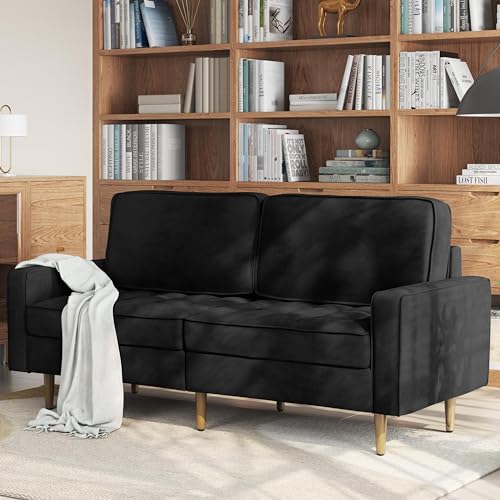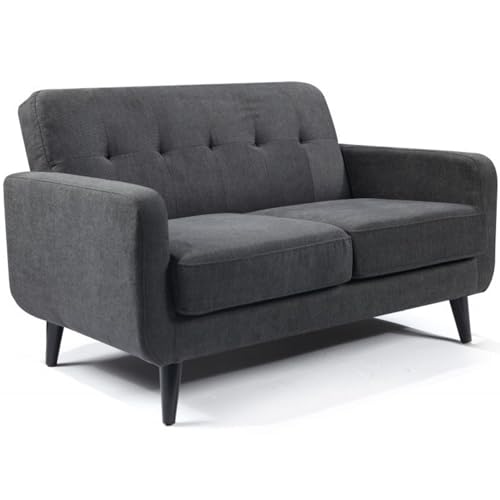Guide To 2 Seater Leather And Fabric Sofa: The Intermediate Guide For …
페이지 정보
작성자 Arnulfo Batey 작성일24-11-21 21:41 조회4회 댓글0건관련링크
본문
 Choosing Between a 2 seater fabric sofa uk 2 seater fabric tub sofa leather and fabric sofa - http://idea.informer.com/users/geminiberry78/?what=personal -
Choosing Between a 2 seater fabric sofa uk 2 seater fabric tub sofa leather and fabric sofa - http://idea.informer.com/users/geminiberry78/?what=personal -If you're looking for a new sofa, it is difficult to decide between leather or fabric. This is particularly relevant if you're new to furniture experience.
 If you have kids or reside in an apartment The leather option might be a good fit for you. It is easy to maintain and looks gorgeous in a lot of homes.
If you have kids or reside in an apartment The leather option might be a good fit for you. It is easy to maintain and looks gorgeous in a lot of homes.Comfort
The sofa is usually the focal point of homes and is a significant purchase. You want one that you can sit on for a long time and looks good, is in line to your style and can stand the test of time. The decision between fabric or leather isn't easy, but it is important to consider your needs and lifestyle before making a decision.
Leather is a premium, luxurious material that exudes class and luxury in any home. It is durable and stain-resistant, it is resistant to children and pets and can last for a long time if given proper care. However, it could be more expensive in the beginning and could require regular conditioning to prevent peeling or cracking.
Fabric sofas are available in a broad range of styles, colours and fabrics. They can be more affordable than leather ones. They are also more comfortable and more cosy, and can be "broken in" right from the beginning. They are more prone to dust mites or pet hairs and require frequent cleaning. There are now hypoallergenic fabrics as well as new technologies available.
The life-span of a fabric sofa will depend on the quality of the material however, most fabrics will last for up to 15 years if properly maintained. Regular vacuuming and deep cleaning will aid in keeping the fabric clean and free of odours and spills. Like leather, they are susceptible to flattening and sagging over time. A majority of couches made of fabric are treated with chemicals that make them stain-resistant and flame retardant. These can release volatile organic compounds that could affect the quality of air in the indoor environment and cause allergies.
Durability
When buying sofas, we usually choose fabrics that are incredibly robust, which is important when you have pets or children. You don't want to pay a lot upfront and end up with buyer's remorse after the first spill or crowbarred claws. You don't want a cheap item that isn't durable enough for everyday use.
Leather is also extremely tough and has a remarkable tear strength. It can also last up to 4 times longer than fabric, and is naturally resistant to cracking, fade and flaking over time. It can be conditioned to replenish its natural oils and to make it appear new.
Fabrics are more affordable and come in many different colors, patterns, and textures that can be adapted to any style of interior. They are also easier to clean than leather and can withstand a significant amount of wear and tear but they do tend to be more prone to moisture and can suffer from fading as time passes.
Microfiber is a good choice for durability and can be found in a wide range of colors, however it's not as durable as genuine leather and may not be able to take the punishment of scratches. However, it's still an excellent choice for families due to of its resistance to spills and stains and it is easy to clean generally with a damp cloth.
Suede is more difficult to clean and repair than leather. It can also lose its shape if not regularly maintained and can feel very rough to the roughness of the. It's also a thin material and so might not be as sturdy as cowhide or sheepskin leather.
Allergens
The fabric the sofa is constructed of can have a major impact on your allergies, so it's important to know how different options hold up. Fabrics tends to retain allergens, such as dust mites and pet dander which can cause symptoms such as asthma, hay fever, rhinitis and eczema. This is because they create the perfect environment in which they can thrive.
However, leather, unlike other materials is not a source of allergens and provides a consistent level of comfort, regardless of the season. It can also cause dermatitis in people who have contact dermatitis or are allergic to chemicals used in tanning. To minimize skin reactions, it is essential to use products made from vegetable oils and keep a consistent skincare routine.
Sofas made of leather and fabric have a high degree of durability, but the type of Fabric 2 Seater Sofas you choose will determine how well it holds up over time. A top-quality fabric will not suffer from shrinking or fading and can stand up to spills body oils, spills and everyday use. Modern sofas have stain-resistant treatments that make cleaning easy.
While you might not be able to completely avoid an allergic reaction to the leather in your sofa, you can help to avoid allergens by keeping a lint roller close by and regularly vacuuming your living space. This will reduce the amount dirt, pet hair, and dust mites you find on your sofa. If you still suffer from allergies, consider replacing your sofa with a hypoallergenic one. For example, a leather sofa made of vinyl or synthetic leather is less likely to hold dust mites and pet dander. It also will help you breathe easier.
Scratches
When buying a leather sofa, it is important to think about the amount of wear and tear you can expect from it. The length of time a sofa will last is contingent on the finish, colour and the quality of the leather. You should also make sure it is durable to withstand spills or other accidents. This can be achieved by selecting a couch with a frame made of wood and high-density foam cushions.
Leather can be damaged for various reasons, like stretching or marking territory, or even the reliving of stress. Scratches can be severe and range from small 2 seater fabric sofa surface scratches to large cuts and punctures. Small scratches can be repaired by using a conditioner for leather. This will restore the balance between moisture and oil within the leather and prevent it from drying out or cracking. Deep cuts and scratches might require a different treatment according to the extent of damage.
It is recommended for cat owners to trim their cat's nails regularly. This will prevent them from scratching the sofa. You can also stop your cat's scratching habits by providing them with scratching surfaces, such as sisal rope or cardboard. Another option is using a pet-safe furniture polish which can be applied with a soft cloth to the affected area.
It is important to wash your leather sofa regularly and keep it out of direct sunlight and heat, as they can dry it out. This can cause the leather to crack. Repairing this is often difficult and requires an overhaul. It is also a good idea to apply a leather conditioner to keep the leather and fabric 2 seater sofa supple.
Smell
Leather couches tend to smell a little different than fabric. It's because leather is porous, and will absorb odors like smoke, body odors, or food. The good news is, the smells typically disappear over time particularly when you use a non-toxic and fragrance-free cleaner.
If the smell is very overpowering it could mean that there's something wrong with the foam. This is often caused by chemical off-gassing from petroleum-based polyurethane. If you are concerned about this then seek out couches manufactured with CertiPUR US certified latex or natural latex.
Another way to tell if it's faux leather is to look for bumps or texture on the back of the sofa. This is a clear indication that it's bonded, not genuine top grain leather. You can also do an inspection by tiling the couch on its side to see if it's possible to see any visible upholstery backing. If you can see any, it's likely a synthetic material like polyester or polyurethane, which will have a distinct smell than true leather.
Leather couches are more prone to picking up smells, the most effective way to avoid this is to regularly clean your sofa. This will keep it looking its best and fresh, as well as preventing it from becoming stiff or cracking over time. Begin by vacuuming and dusting the couch with baking soda (a natural method of eliminating odors). It is recommended to do this at least once every two weeks or more to get rid of any dirt and dust accumulation. Then apply a leather conditioner to help keep your sofa's color and texture.
댓글목록
등록된 댓글이 없습니다.

